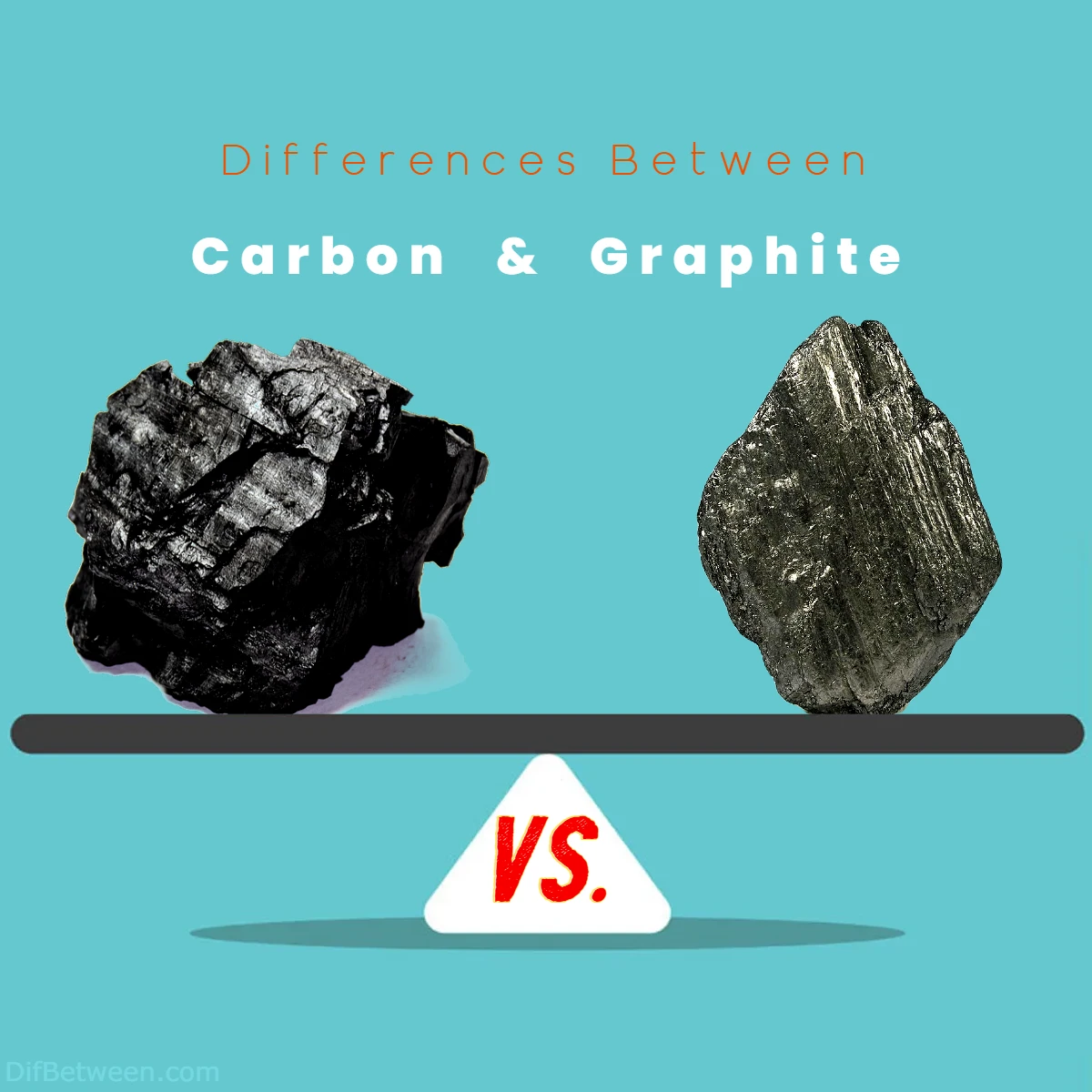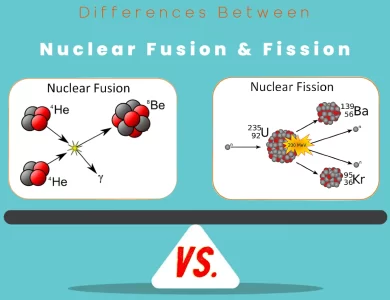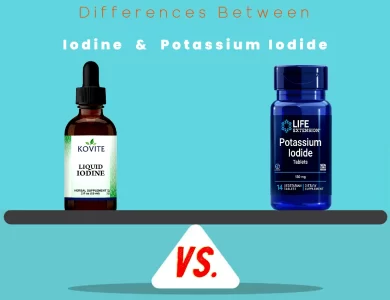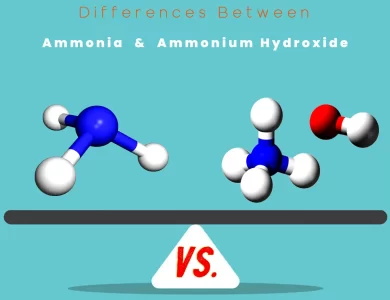
| Property | Carbon | Graphite |
|---|---|---|
| Element | The 6th element in the periodic table. | Formed by carbon atoms arranged in layers. |
| Crystal Structure | Diverse crystalline forms, including diamond and more. | Consists of layered graphene sheets. |
| Bonding | Various types of bonding, including covalent and amorphous. | Covalent bonding within layers, weak van der Waals forces between layers. |
| Optical Properties | Varies depending on form. Transparent in diamond form. | Appears opaque and black due to interlayer absorption/scattering. |
| Electrical Conductivity | Varies from insulating (amorphous carbon) to conducting. | Conductive within layers due to graphene structure. |
| Mechanical Properties | Range of mechanical properties depending on form. | Anisotropic – soft along layers, stronger perpendicular to layers. |
| Thermal Conductivity | Varies with form. High in diamond, low in amorphous carbon. | Conducts heat along layers, limited interlayer heat conduction. |
| Applications | Wide range of applications including organic chemistry, composites, and fuels. | Lubricants, electrodes, nuclear industry, pencils, and more. |
| Nanostructures | Can form carbon nanotubes and graphene. | Can form graphene, a single layer of graphite. |
| Environmental Impact | Emissions of carbon dioxide (CO2) contribute to climate change. | Limited direct impact; localized effects from extraction. |
| Future Focus | Integral in renewable energy systems and carbon capture. | Key role in energy storage, especially lithium-ion batteries. |
| Decision Factors | Versatility, adaptability, and diverse applications. | Layered structure, conductivity, and lubricating properties. |
Imagine a world where carbon transforms itself into dazzling diamonds that sparkle under the sun’s embrace. Now shift your gaze to the humble pencil in your hand, where graphite gracefully leaves its mark, layer upon layer. These seemingly disparate materials share an elemental origin, yet they take on distinct personalities that mesmerize us with their versatility.
Differences Between Carbon and Graphite
The primary distinctions between Carbon and Graphite lie in their structures and properties. Carbon, the sixth element, showcases remarkable versatility, taking on diverse forms such as diamonds and amorphous substances. Graphite, a crystalline structure of carbon atoms, presents layered elegance with interconnected hexagonal rings. While carbon exhibits various bonding types and optical properties, graphite’s covalent bonds within layers and weak interlayer forces grant it unique conductivity and lubricity. This elemental comparison sheds light on the fascinating differences that define Carbon and Graphite.
1. The Elemental Dance: Carbon and Graphite
Carbon: The Elemental Chameleon
Carbon, the sixth element in the periodic table, is renowned for its versatility and abundance in the Earth’s crust. It’s a master of transformation, assuming various forms depending on the conditions it finds itself in. From the dazzling diamond to the humble charcoal, carbon’s ability to adapt and exhibit diverse properties makes it a fundamental building block of life and materials.
Graphite: Layers of Delight
Graphite, on the other hand, is a specific crystalline structure formed by carbon atoms. It’s essentially a three-dimensional manifestation of a two-dimensional structure. Picture a deck of cards neatly stacked one on top of the other. Each card represents a layer of carbon atoms interconnected in hexagonal patterns. These layers, known as graphene layers, are held together by weak van der Waals forces, allowing them to easily slide past one another. This exceptional property gives graphite its characteristic slippery feel and makes it a superb lubricant and material for applications like pencils.
2. Crystal Clear: Structure and Arrangement
Carbon’s Structural Symphony
Carbon’s structural diversity is a true marvel. Its atoms can arrange themselves in various crystalline configurations, resulting in an array of materials with distinct properties. For instance, in diamond, carbon atoms form a tetrahedral lattice, creating one of the hardest known substances. In contrast, amorphous carbon lacks a defined crystalline structure, leading to properties that range from opaque to transparent.
Graphite’s Layered Elegance
Graphite, with its mesmerizing layers, boasts a unique arrangement of carbon atoms. Each graphene layer is composed of interconnected hexagonal rings, resembling a honeycomb lattice. The carbon atoms within these layers are bonded covalently, forming strong in-plane bonds. However, the layers themselves are held together by weak van der Waals forces, allowing them to slip past each other effortlessly. This arrangement grants graphite its lubricity and conductivity while offering varying degrees of mechanical strength along different axes.
Table 1: Structural Comparison of Carbon and Graphite
| Property | Carbon | Graphite |
|---|---|---|
| Crystal Structure | Diverse (diamond, amorphous, etc.) | Layered graphene sheets |
| Bonding | Various (covalent, amorphous, etc.) | Covalent bonding within layers |
| Weak van der Waals forces between layers |
3. All That Glitters: Optical Properties
Carbon’s Dazzling Brilliance
Carbon’s optical properties vary widely based on its form. Diamond, with its tightly bound carbon atoms in a crystal lattice, exhibits exceptional transparency across a broad spectrum of wavelengths. This transparency, coupled with its high refractive index, gives rise to the captivating brilliance that diamonds are famous for.
Graphite’s Dark Secret
In stark contrast, graphite has a rather unassuming demeanor when it comes to optics. Due to its unique layering and the availability of free electrons between the layers, graphite appears opaque and black. It readily absorbs and scatters light, resulting in its distinct appearance.
4. Conducting Matters: Electrical Conductivity
Carbon’s Conductive Talent
Carbon’s electrical conductivity spans a wide range, depending on its arrangement. Graphene, a single layer of graphite, is a superstar in this realm. Its honeycomb lattice of carbon atoms provides a pathway for electrons to move freely, endowing graphene with remarkable electrical conductivity. This property has garnered significant attention for its potential in electronic applications.
Graphite’s Conduction Symphony
Graphite, composed of multiple layers of graphene, is also an excellent conductor of electricity, albeit in a different way. While individual graphene layers conduct electricity effectively, the weak interactions between layers hinder the overall conductivity to some extent. Nevertheless, graphite’s conductivity is still impressive and finds use in various applications like electrodes and as a lubricant.
Table 2: Electrical Properties of Carbon and Graphite
| Property | Carbon | Graphite |
|---|---|---|
| Electrical Conductivity | Varied (insulators to conductors) | Excellent conductivity within layers |
| Limited interlayer conductivity |
5. Strength in Diversity: Mechanical Properties
Carbon’s Enduring Strength
Carbon materials exhibit a wide spectrum of mechanical properties. Diamond, with its tetrahedral lattice structure, is renowned for its exceptional hardness and durability. It’s one of the hardest known materials, capable of withstanding tremendous forces.
Graphite’s Anisotropic Nature
Graphite showcases anisotropy, meaning its mechanical properties differ significantly depending on the direction of measurement. Along the plane of its layers, graphite is relatively soft and slippery due to the weak interlayer forces. However, perpendicular to the layers, graphite displays greater mechanical strength. This duality makes it valuable for applications that require both lubrication and strength.
6. Heat of the Moment: Thermal Conductivity
Carbon’s Thermal Symphony
Carbon materials also possess varying degrees of thermal conductivity. Diamond takes the lead once again with exceptional thermal conductivity. Its tetrahedral lattice allows heat to propagate rapidly through the material, making diamond an excellent heat sink.
Graphite’s Thermal Encore
Graphite, with its layered structure, excels in conducting heat along its layers. The carbon atoms within a layer form strong covalent bonds, promoting efficient heat transfer. However, interlayer heat conduction is limited due to the weak van der Waals forces. This thermal anisotropy finds applications in heat management and insulation.
Table 3: Thermal Properties of Carbon and Graphite
| Property | Carbon | Graphite |
|---|---|---|
| Thermal Conductivity | High (diamond) | Anisotropic (along layers) |
| Low (amorphous carbon) |
7. Applications: Where Carbon and Graphite Shine
Carbon’s Versatility in Applications
Carbon’s wide-ranging properties make it a darling in various industries. From its use in structural materials like carbon fiber composites to its pivotal role in organic chemistry as a basis for life’s molecules, carbon’s adaptability is a cornerstone of modern technology and life sciences.
Graphite’s Niche Dominance
Graphite’s unique properties carve out a special place for it in multiple domains. Its lubricating nature finds applications in machinery, while its conductivity makes it indispensable in electrodes for batteries and fuel cells. Graphite’s use in the nuclear industry is also notable due to its ability to withstand high temperatures and serve as a moderator in nuclear reactors.
8. The Carbon Connection: Transformations into Graphite
Graphitization: Carbon’s Evolution into Graphite
Graphite doesn’t emerge from thin air—it’s often a result of a process called graphitization. This transformation occurs at elevated temperatures and pressures over extended periods. Initially, amorphous carbon or carbon-rich materials are subjected to these conditions, causing the rearrangement of carbon atoms into the distinct layered structure of graphite. This process is fundamental in the production of synthetic graphite used in various applications.
9. Environmental Impact: Carbon and Graphite’s Footprint
Carbon’s Climate Concerns
In recent years, the environmental impact of carbon emissions, particularly in the form of carbon dioxide (CO2), has gained substantial attention due to its contribution to global warming and climate change. The combustion of carbon-based fuels releases significant amounts of CO2 into the atmosphere, driving efforts to transition toward cleaner energy sources.
Graphite’s Sustainable Side
Graphite, while composed of carbon, has a relatively lower direct environmental impact. Its applications in renewable energy systems, such as lithium-ion batteries and fuel cells, contribute to the reduction of greenhouse gas emissions. However, the extraction and processing of graphite can have localized environmental effects, emphasizing the need for responsible mining practices.
10. Innovations at the Nanoscale: Carbon Nanotubes and Graphene
Carbon Nanotubes: Cylinders of Potential
Venturing into the realm of nanotechnology, carbon unveils yet another stunning manifestation: carbon nanotubes (CNTs). These cylindrical structures are formed by rolling up a single layer of graphene into a seamless tube. CNTs exhibit extraordinary mechanical strength, electrical conductivity, and thermal properties. Single-walled carbon nanotubes (SWCNTs) are like individual strands of woven carbon, while multi-walled carbon nanotubes (MWCNTs) consist of several concentric tubes nestled within each other. These nanostructures have garnered immense interest for applications ranging from electronics to composite materials.
Graphene: A Singular Sheet
Graphene, often hailed as a wonder material, is a single layer of carbon atoms arranged in a two-dimensional honeycomb lattice. Its exceptional electrical, thermal, and mechanical properties have made it the darling of researchers worldwide. Graphene conducts electricity better than most materials, making it an excellent candidate for flexible electronics, transparent conductive films, and more. Its single-atom thickness also grants it remarkable flexibility and strength. Scientists are exploring diverse applications for graphene, from energy storage to medical devices.
Table 4: Nano-Structures Derived from Carbon
| Nanostructure | Description | Properties and Applications |
|---|---|---|
| Carbon Nanotubes (CNTs) | Cylindrical structures formed from graphene | Exceptional strength, conductivity, and thermal properties; applications in electronics, composites, and more |
| Graphene | Single layer of carbon atoms in a lattice | Superb electrical conductivity, mechanical strength, and flexibility; potential applications in various industries |
11. Elemental Twins: Properties of Carbon and Graphite in Perspective
The Interplay of Properties
Carbon and graphite share an elemental origin, yet their properties result from distinct arrangements and structures. Carbon’s diverse forms, from the sparkle of diamonds to the opacity of amorphous carbon, highlight its adaptability. In contrast, graphite’s layered elegance, conductivity, and lubricity stem from its specific crystalline structure. Together, these properties enable a wide array of applications, shaping industries and technologies.
Harnessing Properties for Innovation
The contrasting properties of carbon and graphite become powerful tools for innovation when harnessed appropriately. Carbon fibers, derived from carbon’s strength and lightness, find use in aerospace and sports equipment. Meanwhile, graphite’s lubricating properties enable smooth mechanical operations, and its conductivity propels advances in electronics.
12. Looking Ahead: Carbon and Graphite in Future Endeavors
Carbon’s Role in Sustainability
As the world shifts towards sustainability, carbon plays a central role in renewable energy systems. Carbon-based materials like graphene are under exploration for improved solar cells, and carbon nanotubes hold promise in enhancing energy storage. Additionally, carbon capture and utilization technologies aim to mitigate carbon dioxide emissions.
Graphite’s Expanding Horizons
Graphite’s role in energy storage, particularly in lithium-ion batteries, is pivotal. As electric vehicles and renewable energy systems proliferate, graphite’s demand is poised to rise. Advancements in graphite-based anode materials could unlock higher energy densities and longer battery lifespans.
Carbon or Graphite: Which One is Right Choose for You?
When it comes to choosing between carbon and graphite, you’re delving into a world of fascinating options with distinct properties and applications. Both carbon and graphite offer a plethora of possibilities, each tailored to specific needs. Let’s embark on a journey to help you decide which one is the right choice for you.
1. Carbon: The Versatile Shapeshifter
Is Carbon for You?
If you’re seeking a material that can adapt to a wide range of forms and functions, carbon might be your go-to choice. Carbon’s versatility allows it to transform into various substances, from the sparkle of diamonds to the strength of carbon fiber composites. If you’re interested in organic chemistry or the building blocks of life, carbon is the foundation of all living organisms. It’s also a key player in fuels and energy systems.
Applications Galore
Carbon’s adaptability translates into diverse applications. If you’re an engineer, you might explore carbon composites for lightweight and sturdy structures. If you’re intrigued by electronics, you could venture into carbon-based conductive materials. And if sustainability is your concern, carbon capture and utilization technologies offer ways to mitigate carbon emissions.
2. Graphite: The Layered Marvel
Is Graphite Your Match?
If you’re drawn to a material with unique layered properties and exceptional conductivity, graphite might be the perfect fit. Graphite’s arrangement of carbon atoms into honeycomb layers sets it apart from other forms of carbon. Its ability to slide smoothly layer upon layer makes it an excellent lubricant.
From Pencils to Batteries
Graphite finds its way into everyday items like pencils, where its layered structure leaves a trail of marks. If you’re an artist or a writer, graphite might resonate with your creative side. Beyond that, if you’re an engineer exploring energy storage solutions, graphite’s role as a vital component in lithium-ion batteries could spark your interest.
3. The Ultimate Decision: Carbon vs. Graphite
Consider Your Needs
The decision between carbon and graphite hinges on your specific needs and interests. Ask yourself what you’re aiming to achieve. Are you after strength and adaptability? Carbon might be your answer. Or are you seeking a material with exceptional conductivity and layer-specific properties? In that case, graphite could be your solution.
Blending the Best of Both
Remember, these materials aren’t mutually exclusive. In fact, they often work together synergistically. Carbon fibers reinforced with graphite layers can create strong yet lightweight structures. Carbon nanotubes infused with graphite could yield advanced composite materials.
4. The Future Awaits
Stay Curious and Innovative
As you consider the choice between carbon and graphite, keep in mind that both materials are at the forefront of innovation. Carbon nanotubes and graphene, derived from these materials, are leading the charge in nanotechnology and cutting-edge research. By staying curious and open to exploration, you might find yourself at the forefront of pioneering developments.
Consult the Experts
If your decision is pivotal to a project or industry, consider consulting experts who specialize in carbon-based materials. Engineers, scientists, and researchers can provide insights tailored to your unique requirements, helping you make an informed choice.
5. Embrace the Diversity
Celebrating the Spectrum of Possibilities
Whether you’re captivated by the adaptability of carbon or the layered elegance of graphite, embracing the diversity of elements is a journey of discovery. Both carbon and graphite offer a spectrum of possibilities that span from artistic expressions to groundbreaking technological advancements.
Your Choice, Your Adventure
Ultimately, the choice between carbon and graphite is a unique adventure. It’s a journey that aligns with your goals, passions, and aspirations. So, as you step into the realm of carbon and graphite, remember that you’re embarking on a path paved with endless opportunities for innovation and exploration.
FAQs
The key distinction lies in their structures and properties. Carbon can exist in diverse forms, while graphite is a crystalline structure formed by layers of carbon atoms interconnected in hexagonal patterns.
Carbon exhibits various bonding types, including covalent and amorphous bonding, depending on its form. Graphite, on the other hand, has covalent bonding within its layers and is held together by weak van der Waals forces between layers.
Carbon’s optical properties vary; diamonds, for instance, are transparent due to their lattice structure. Graphite, however, appears opaque and black due to its interlayer absorption and scattering of light.
Carbon’s electrical conductivity varies; some forms are insulating, while others are conductive. Graphite’s unique layered structure grants it excellent electrical conductivity within its layers due to the arrangement of carbon atoms.
Carbon’s mechanical properties range widely depending on its form. Graphite showcases anisotropy, being softer along its layers and stronger perpendicular to them due to its layered structure.
Carbon’s thermal conductivity varies with its form; diamond has high thermal conductivity, while amorphous carbon has low conductivity. Graphite excels in conducting heat along its layers but has limited interlayer heat conduction.
Carbon finds applications in various industries, from composites to organic chemistry. Graphite’s lubricating and conductive properties make it suitable for uses in machinery, electrodes, and even pencils.
Both carbon nanotubes and graphene are derived from carbon. Carbon nanotubes are cylindrical structures with impressive mechanical and electrical properties, while graphene is a single layer of carbon atoms with exceptional conductivity and strength.
Carbon emissions, particularly as carbon dioxide (CO2), contribute to climate change. Graphite has a limited direct impact, but its extraction and processing can have localized environmental effects.
Consider the properties that align with your needs. If you need versatility and adaptability, carbon might be your choice. For applications requiring conductivity and layered properties, graphite could be the ideal option. Explore the unique strengths of each to make an informed decision tailored to your goals.
Read More:
Contents
- Differences Between Carbon and Graphite
- 1. The Elemental Dance: Carbon and Graphite
- 2. Crystal Clear: Structure and Arrangement
- 3. All That Glitters: Optical Properties
- 4. Conducting Matters: Electrical Conductivity
- 5. Strength in Diversity: Mechanical Properties
- 6. Heat of the Moment: Thermal Conductivity
- 7. Applications: Where Carbon and Graphite Shine
- 8. The Carbon Connection: Transformations into Graphite
- 9. Environmental Impact: Carbon and Graphite’s Footprint
- 10. Innovations at the Nanoscale: Carbon Nanotubes and Graphene
- 11. Elemental Twins: Properties of Carbon and Graphite in Perspective
- 12. Looking Ahead: Carbon and Graphite in Future Endeavors
- Carbon or Graphite: Which One is Right Choose for You?
- FAQs






